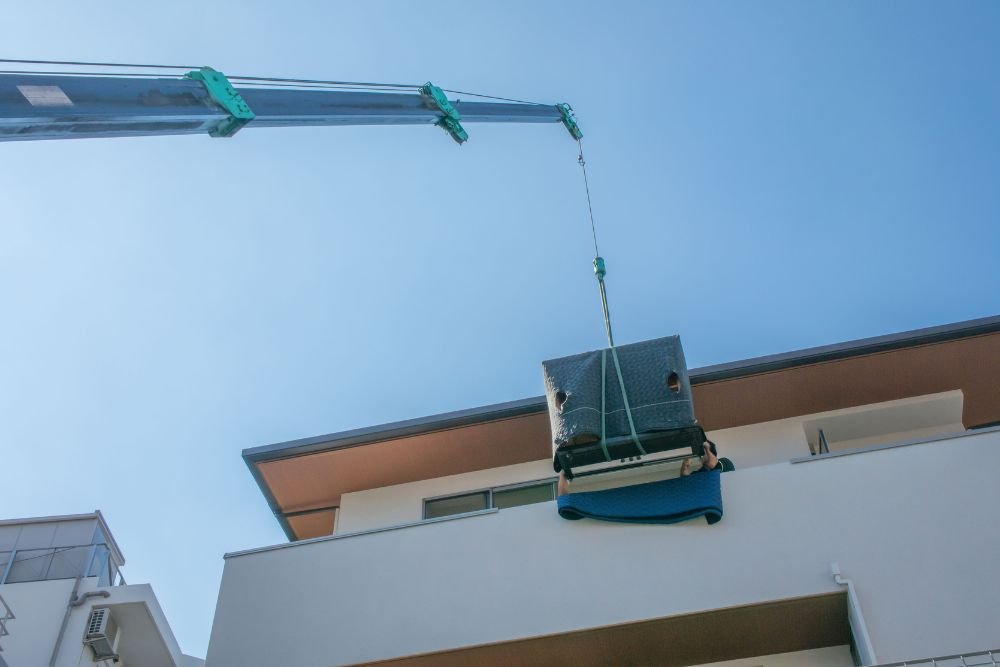
When approaching your next DIY project, it's vital to emphasize safety. Rigging gear, often missed, plays a crucial role in securing loads and preventing Miami property value estimation incidents. From strings to pulleys and shackles, understanding how to correctly use this equipment can be the difference between a successful project and a potentially risky situation.
Before you begin any lifting or transporting operations, take the time to learn yourself with the operation of each rigging component. Inspect your gear for damage, and never risk safety by using faulty equipment.
Essential Rigging Gear: Your Guide to Making Moving Day Easier
When it comes/you're facing/it's time for your next big move/move day/household relocation, ensure/make certain/guarantee you have the right tools/equipment/supplies. Rigging equipment/Moving gear/Lifting tools can significantly simplify/greatly assist/make a world of difference in moving heavy items/transporting bulky furniture/handling your belongings safely. From basic straps/strong ropes/durable lifting bands to pulleys and hooks/lifting systems/mechanical aids, understanding the basics/fundamentals/essentials can transform/revolutionize/streamline your moving process/experience/day. This beginner's guide/resource/overview will equip you/walk you through/help you understand the key pieces/vital components/essential items of rigging equipment and how to use them/their applications/safe handling techniques.
- Invest in/Consider purchasing/Acquire a quality set/durable collection/range of rigging straps/lifting belts/moving bands
- Learn how to/Familiarize yourself with/Master the use of pulleys and hooks/lifting systems/mechanical advantages
- Prioritize safety by/Always practice/Make sure to
- inspect equipment regularly/check for wear and tear/ensure proper functionality
With the right knowledge and preparation, you can/moving day can become/you'll be able to tackle your move with confidence/handle heavy items safely/make your moving experience less stressful.
Securing Your Loads: Rigging Basics for Home Renovations For tackling home projects
Renovating your home can be a rewarding experience, but it's crucial to prioritize safety. One often overlooked aspect is fastening your loads properly. When you're moving heavy materials like lumber or drywall, or simply lifting items around your work area, using the proper rigging techniques can prevent accidents and damage.
- Begin by understanding the weight you're dealing with. This will help select the appropriate cord and pulleys.
- Examine your rigging for any signs of stress before each use. A single frayed rope can lead to a serious incident.
- Tie your loads properly using knots that are known for their strength and reliability, such as the bowline or clove hitch.
- Regularly inspect your rigging while working. Adjust as needed to maintain a secure connection.
Keep in mind that safety should always be your top priority. Don't hesitate to seek professional guidance if you're unsure about any aspect of rigging for your home renovation project. A little precaution can go a long way in preventing injury.
Master the Art of Lifting: Essential Rigging Practices at Home
Whether you're tackling a major home improvement project, or simply need to transport heavy items, grasping rigging techniques can make all the difference. Effectively rigging ensures that loads are handled with precision, minimizing the risk of injury and damage to your belongings.
A well-executed rigging setup involves a few key elements: first, choose the right lifting equipment for the job. This could include hoists, cables, shackles, and other accessories. Next, verify that all equipment is in top condition and rated for the weight you're lifting.
Always assess your rigging before use, checking for any signs of wear or damage. Once you have the right equipment, create a secure attachment point for your load using appropriate straps.
Remember that safety should always be your top priority. Wear appropriate personal protective equipment (PPE), including gloves, eye protection, and sturdy footwear.
Before you lift anything, communicate clearly with anyone else involved to avoid accidents. Always move loads in a controlled manner, avoiding sudden jerks or drops. If you're ever unsure about a particular lifting task, it's always best to seek guidance to a qualified professional.
Key Tools for the Toolbox: Mastering Basic Rigging
When it comes to rigging, success depends heavily on having the right tools at your disposal. A well-stocked toolbox can enable all the difference between a smooth operation and a frustrating headache. Starting with the essentials, you'll need a sturdy set of cordage in various diameters to suit different applications. A reliable cutter for precise cuts, and a selection of joins to secure your loads are also essential.
- Adding this core set, you'll want a versatile wheel system for multiplying force and reducing strain.
- Assessing your rigging hardware regularly for wear and tear is essential to safety
By acquiring these fundamental tools and mastering their applications, you'll be well on your way to confidently tackling any rigging project.
From Garage to Garden
Whether you're repairing that old motorcycle or growing a vibrant patch, having the right machinery on hand can make all the difference. A well-organized garage workshop can become your ideal center for tackling any home project. From essential hand utensils to advanced power devices, a well-stocked garage enables you to take on projects big and minor.
- Organize your utensils for easy access.
- Acquire in reliable tools that will last.
- Consider a dedicated workbench for your projects.